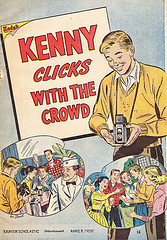Spammers Using Pinterest Pics To Hide Scammy Links
Through the evolution of e-mail, the Internet and social media, most of the rules for identifying spam remained the same. The text of a scam e-mail sent on old school AOL isn’t that different from the spam links posted today on Twitter or Facebook. But photo-based social sites like Pinterest are giving nogoodniks a less-familiar way to trick people into clicking.
It’s incredibly easy to create a Pinterest page, then load it up with images people on which people will want to click. And it’s just as easy to have those legitimate-looking photos link back to less-than-legitimate content.
But what isn’t easy, is getting the problem resolved.
Bloomberg has the story of a jewelry maker who found that a photos of her products were being used to direct people to spam sites. She says she contacted Pinterest every day for 10 days before she was able to get the images with offending links removed.
But some damage had already been done, both to those who clicked and to the woman whose images had been swiped.
“I can’t gauge how many customers I lost,” she tells Bloomberg. “But I did have people messaging me asking, ‘Are you linked to spam?’ I was just distraught.”
Spammers Invade Pinterest-Era Social Media, Avoid E-Mail [Bloomberg]
Want more consumer news? Visit our parent organization, Consumer Reports, for the latest on scams, recalls, and other consumer issues.


